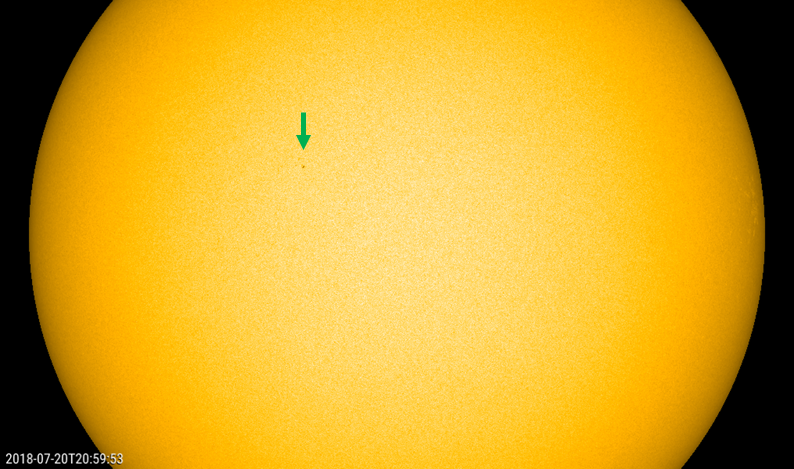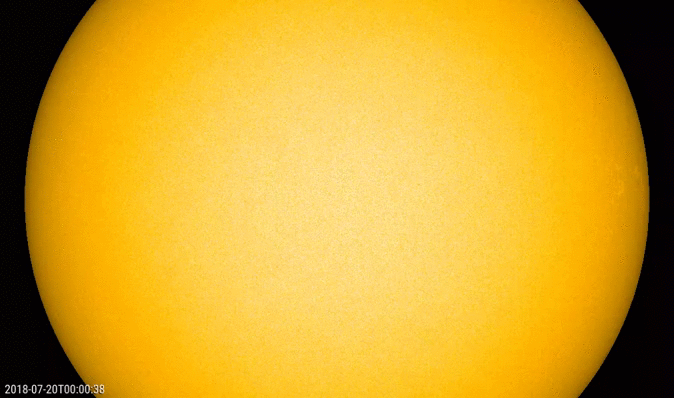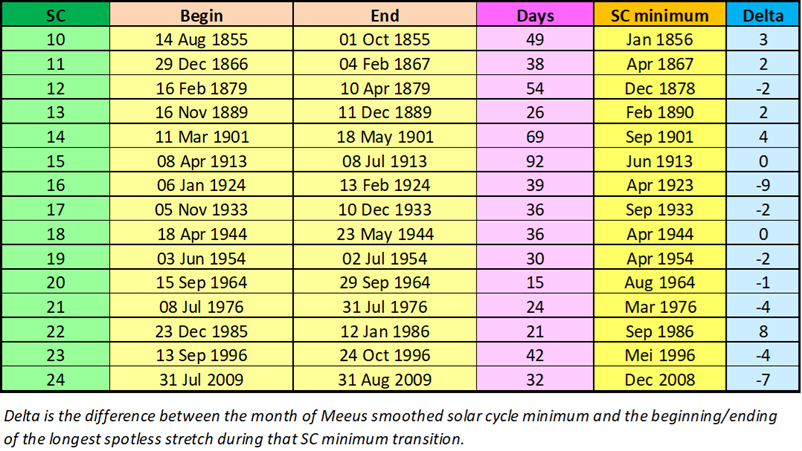A genuine sunspot seems to have been observed on 21 July by a number of telescopes such as USET, Kanzelhöhe and Mount Wilson. The spot was numbered by NOAA as active region NOAA 2716, but the current estimated international sunspot number (EISN) is still 0. This indicates that a number of observers with smaller instruments did not observe it, despite the spot being significantly larger and darker than similar features observed on 13-14-15 July (see the previous STCE Newsitem). NOAA 2716 was visible for about a day, from about 18UT on 20 July till 21UT on 21 July, being best observable late on 20 and early on 21 July.


If the final international sunspot number is not 0 for 21 July, then it will end a spotless stretch that started on 28 June and as such would have lasted for 23 days. This would be the longest interval with no sunspots for the current solar cycle transition, with the 15 days from 6-20 March 2017 being the previous record holder (see this STCE Newsitem). It is an interesting feature of solar cycles that the longest spotless stretch takes place within about 3-4 months of the actual solar cycle minimum, with an uncertainty of 3 months (see the table underneath). It means that IF the observed stretch is indeed the longest one of the current solar cycle transition, then solar cycle minimum can be expected somewhere in 2018, confirming previous signs that we may be in for an early minimum (see e.g. this STCE Newsitem). Of course, we don't know if this was the longest stretch until solar cycle 25 (SC25) is really on the rise, so the foregoing prediction is only valid until the next even longer spotless stretch...

The table below shows all periods with 30 or more consecutive spotless days since 1849. The current solar cycle transition has no entries (yet) in this table. The data are from the SILSO network, and may differ from other observational networks. It is interesting to note that the longest spotless stretch during the SC23-SC24 transition was the most recent one to make it into this table. It is also clear that during the current transition, we are still far from the record set in 1913, when there were 92 consecutive spotless days!






